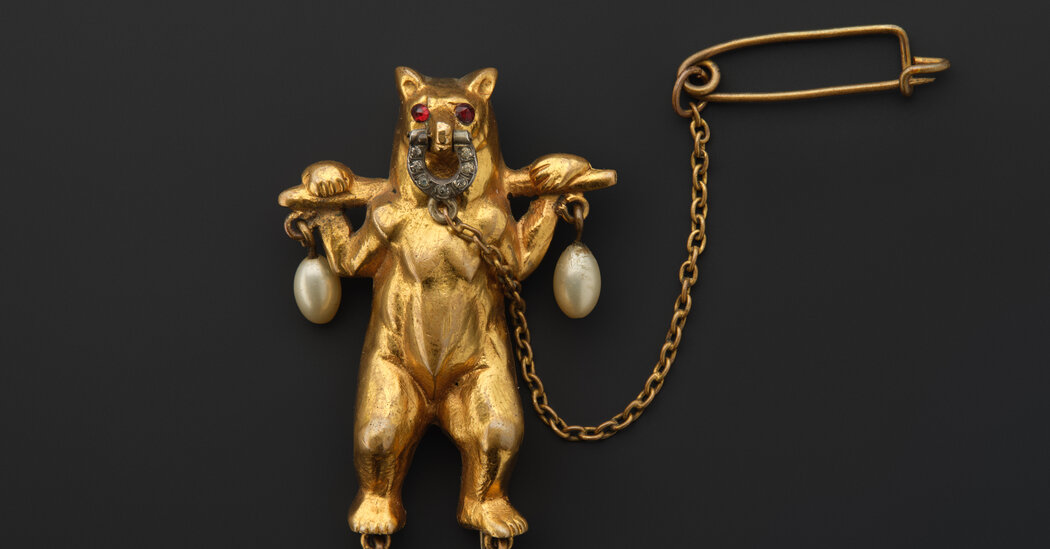
Even the perfect little black dress occasionally needs a bit of bling.
That is why “Beyond the Little Black Dress,” an exhibition running through Oct. 29 at the National Museum of Scotland in Edinburgh, is showing an assortment of jewelry alongside more than 60 versions of the classic wardrobe staple.
Most of the “gems” are costume jewelry, a term referring to inexpensive designs made of common metals and stones or imitation gems, and were created for fashion houses such as Balenciaga, Balmain, Chanel, Dior and Schiaparelli.
The show charts the fashion world’s embrace of costume jewelry from the late 1920s to today, and offers insights into jewelry makers’ view of the little black dress as a stylish backdrop for their often-whimsical creations.
It opens with a silk crepe long-sleeve day dress by Gabrielle “Coco” Chanel from 1926, the year “we’ve kind of mythologized in fashion history as being the birth of the little black dress, and also this kind of popularization of costume jewelry,” said Georgina Ripley, 37, the exhibition’s principal curator.
“I thought there was something in there to explore, about that little black dress — that she is now synonymous with — being this canvas for these accessories,” Ms. Ripley said, although concerns about possible damage prompted curators to place the jewelry in display cases rather than on the garments.
One of the exhibition’s most significant pieces of jewelry is a long necklace of sterling silver and pale-yellow rock crystal that the Parisian jewelry house Lukès made for Chanel. Carys Wilkins, 33, who curated the jewelry selections, said that the piece dates to just a few years after Chanel opened her first costume jewelry counter, which happened in 1924.
The designer “really has been credited as elevating the status of costume jewelry,” she said, “and really with bringing it into the mainstream of the couture industry.”
The necklace belongs to William Wain, 66, a jewelry dealer in Northern Ireland who lent several pieces for the show. One — a brooch made by the French jewelry designer Jean Schlumberger for Elsa Schiaparelli’s fall 1937 Circus collection — depicts a gilded bronze bear with a glass-studded nose ring and four simulated pearls.
Another is an unsigned brooch in the shape of a rooster, attributed to either Schlumberger or Jean Clément (both worked for Ms. Schiaparelli). It is made of red and green enamel, simulated pearls, glass and gilded metal. “A lot of the couture and early jewelry wasn’t signed,” Mr. Wain said. “So therefore, we rely on documentation: photographs from old magazines and different sources.”
Such images helped Mr. Wain determine the provenance of a clip with three Bakelite acorns and gilded metal leaves, also in the exhibition. “I was doing some research with old magazines and I found a photographic illustration of it being worn on the cuff of a garment,” he said. “Two of them. One on each cuff, which is an extremely stylish way of wearing them.
“Then I also found, in an old Vogue, a hand drawn double-page illustration of accessories, and there was the acorn,” described as a Schiaparelli clip, for sale at Saks Fifth Avenue. The museum said Clément created it for the designer’s fall 1938 Pagan collection.






